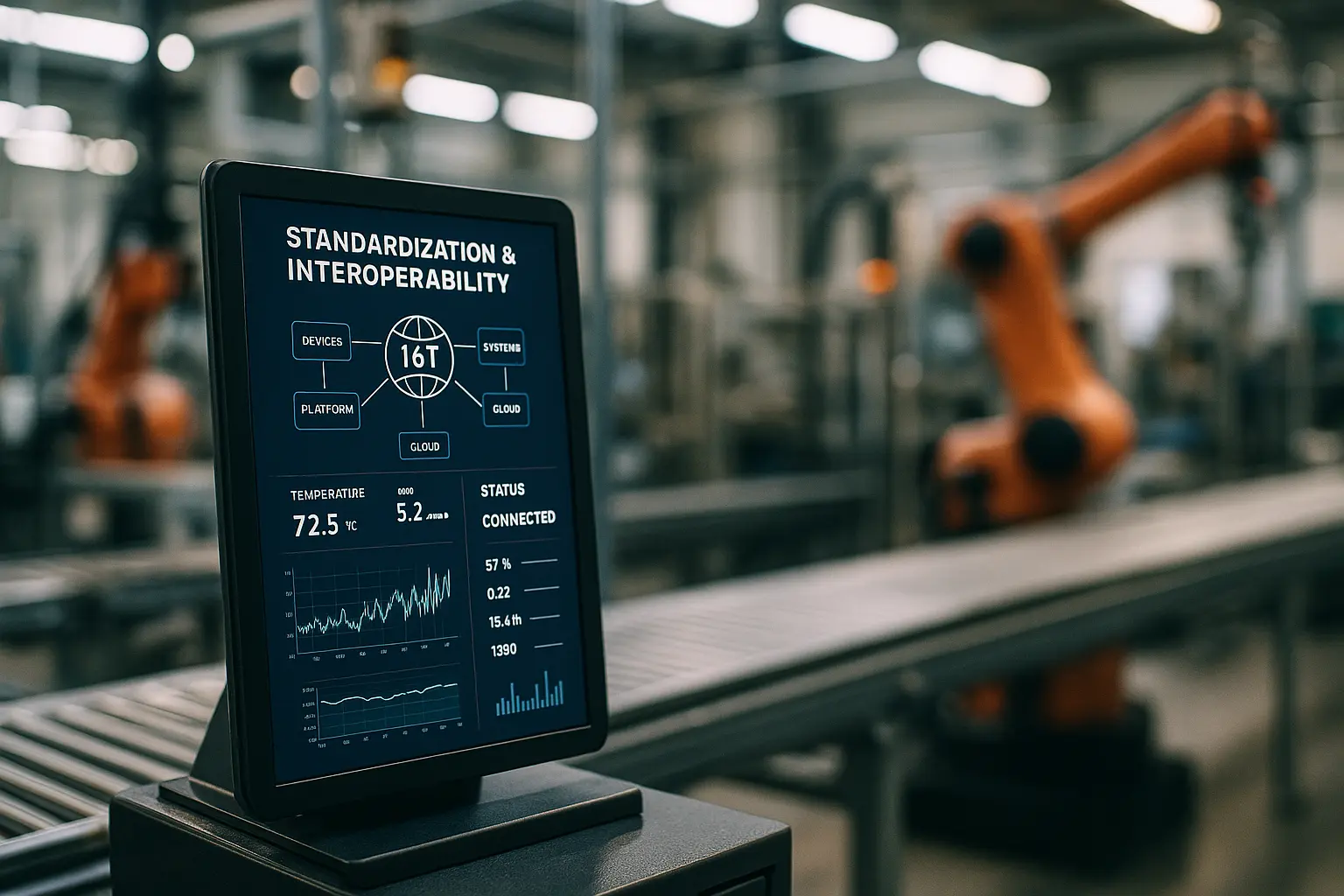In today’s highly connected world, the industrial sector stands on the brink of transformation, driven by the remarkable integration of the Internet of Things (IoT). With an ocean of smart devices and systems flooding the landscape, industries face the dual challenge of ensuring interoperability and embracing standardized practices. But why is this important? Imagine a world where industrial devices can communicate seamlessly and securely, driving efficiency and innovation. This article delves into the heart of this transformation, presenting the challenges and solutions surrounding standardization and interoperability in the realm of Industrial IoT (IIoT).
The Significance of Standardization in IIoT
When dealing with the vast ecosystem of devices and systems in the IIoT landscape, a unified approach is not just beneficial—it’s essential. Standardization provides the framework needed to ensure that disparate devices can communicate and function together harmoniously. Without this, the very essence of IoT—universal connectivity—remains unfulfilled.
By adhering to standardized protocols, industries can achieve interoperability, which is the linchpin of operational efficiency. Standards act as the common language across devices, enabling seamless data exchange and communication. This not only enhances the speed and reliability of data transfer but also bridges the gap between legacy systems and new technologies.
Furthermore, adopting industry standards helps mitigate security vulnerabilities, establishing a framework through which best practices and security measures can be enforced globally. As you venture further into the world of IoT, embracing these standards becomes an invaluable asset in optimizing processes and improving decision-making.
In the rapidly evolving industrial landscape, standardization serves as the backbone that supports a dynamic and integrated ecosystem, enabling industries to harness the full potential of IoT technologies in a way that’s both efficient and secure.
Tackling Interoperability Challenges
In the realm of IIoT, achieving interoperability is akin to solving a complex puzzle. With various manufacturers designing devices and systems, compatibility issues arise, presenting a formidable barrier to seamless integration. This landscape is peppered with challenges, but understanding them is the first step toward resolution.
Diverse Protocols and Systems: One of the most significant hurdles is the existence of diverse protocols and systems. Each manufacturer may have their proprietary technology and communication methods, leading to a lack of unified language among devices. This fragmentation impedes the potential for a truly interconnected industrial ecosystem.
Data Translation: Even when devices can communicate, the translation of data remains a challenge. Differences in data formats necessitate sophisticated translation solutions to ensure that information is accurately interpreted across platforms.
Security Concerns: With interoperability comes the risk of security breaches. The integration of various systems opens potential vulnerabilities that need to be addressed through robust security protocols and practices.
Time Sensitivity: In industrial settings, time is often of the essence. Delays in data communication due to interoperability issues can lead to significant operational inefficiencies. Addressing these challenges requires innovative solutions, including gateway technologies and middleware platforms that facilitate seamless communication across diverse systems.
Despite these challenges, the benefits of achieving interoperability are immense, promising a future where seamless communication and collaboration drive innovation and efficiency.
Innovative Solutions for Seamless Integration
In the quest for a unified industrial IoT experience, innovative solutions are continually being developed to bridge the gaps in interoperability. These solutions are essential for achieving seamless integration in complex industrial environments.
Open Standards and Protocols: Adopting open standards and protocols is a critical step towards fostering interoperability. Technologies such as the MQTT protocol and OPC UA are gaining traction for their ability to provide a uniform platform for data interchange, thus bridging the communication gap between varied systems.
Middleware Platforms: Middleware solutions play a pivotal role in translating and unifying data across diverse devices and systems. By acting as an intermediary, middleware ensures that data is effectively communicated and translated, supporting seamless integration across the IoT ecosystem.
Edge Computing: Implementing edge computing solutions can significantly enhance interoperability. By processing data closer to the source, edge computing reduces latency and improves the efficiency of data communication, making it a vital component in real-time industrial applications.
Unified Communication Frameworks: Developing unified frameworks for communication ensures that devices from different manufacturers can interact smoothly. Initiatives like unified architecture frameworks are being developed to establish a common communication standard, facilitating seamless integration.
Harnessing these advanced solutions empowers industries to transcend the barriers of interoperability, fostering a connected ecosystem that is primed for innovation and growth.
Security: The Bedrock of Industrial IoT
In the interconnected world of IIoT, security is the silent sentinel that guards against potential vulnerabilities. As the industrial landscape becomes increasingly digitized, ensuring robust security measures is paramount.
End-to-End Encryption: Implementing end-to-end encryption is crucial for safeguarding data as it travels across networks. This ensures that sensitive information remains confidential and protected from unauthorized access, building trust in IoT systems.
Authentication and Authorization: Establishing stringent authentication and authorization protocols is essential for controlling access to sensitive data and systems. By implementing multi-factor authentication and role-based access controls, organizations can prevent unauthorized access and potential breaches.
Regular Security Audits: Conducting regular security audits and vulnerability assessments helps identify and mitigate potential risks. By staying vigilant and proactive, organizations can fortify their defenses against evolving threats and safeguard their IoT infrastructure.
Security by Design: Incorporating security by design principles during the development phase ensures that systems are inherently secure. By embedding security measures into the DNA of IoT devices and solutions, organizations can create a resilient ecosystem resistant to cyber threats.
In the fast-paced world of IIoT, prioritizing security is not just an option—it’s a necessity. A secure IoT framework not only protects data but also paves the way for innovation and growth in a safe and resilient environment.
As we stand on the cusp of a new era in industrial technology, embracing standardization and achieving interoperability in IoT systems is the path forward. This journey hinges on a collaborative effort to adopt unified protocols, innovative solutions, and robust security measures. The promise of a seamlessly connected industrial environment is within reach, and by navigating these challenges, industries can unlock unparalleled efficiencies and drive sustainable growth. With commitment and foresight, the future of IIoT is not just bright—it’s unified.
FAQ
What is interoperability in the context of Industrial IoT (IIoT)?
Interoperability in IIoT refers to the ability of various systems, devices, and applications from different manufacturers to work together seamlessly. This includes data exchange, communication protocols, and the ability to interpret and act on shared information without needing extensive reconfiguration.
Why is standardization important for Industrial IoT?
Standardization is crucial in IIoT because it ensures that devices and systems from different vendors can communicate effectively. It helps to minimize compatibility issues, reduce integration costs, and enhance the scalability and reliability of industrial IoT solutions.
What are some common standards used in Industrial IoT?
Common standards in IIoT include OPC UA (Open Platform Communications Unified Architecture) for secure data exchange, MQTT (Message Queuing Telemetry Transport) for lightweight messaging, and IEEE 802.11 for wireless networking. These standards facilitate consistent communication and interoperability among devices.
How does standardization impact the implementation of Industrial IoT solutions?
Standardization simplifies the implementation of IIoT solutions by providing a clear framework for device compatibility and communication. It reduces the time and costs associated with integrating heterogeneous systems and ensures that solutions can be easily scaled or adapted to new technologies.
What challenges do industries face in achieving interoperability in IIoT?
Industries often encounter challenges such as the lack of universally accepted standards, the diversity of legacy systems, and varying data formats. These issues can lead to integration hurdles and require customized solutions to bridge gaps between different systems and technologies.


